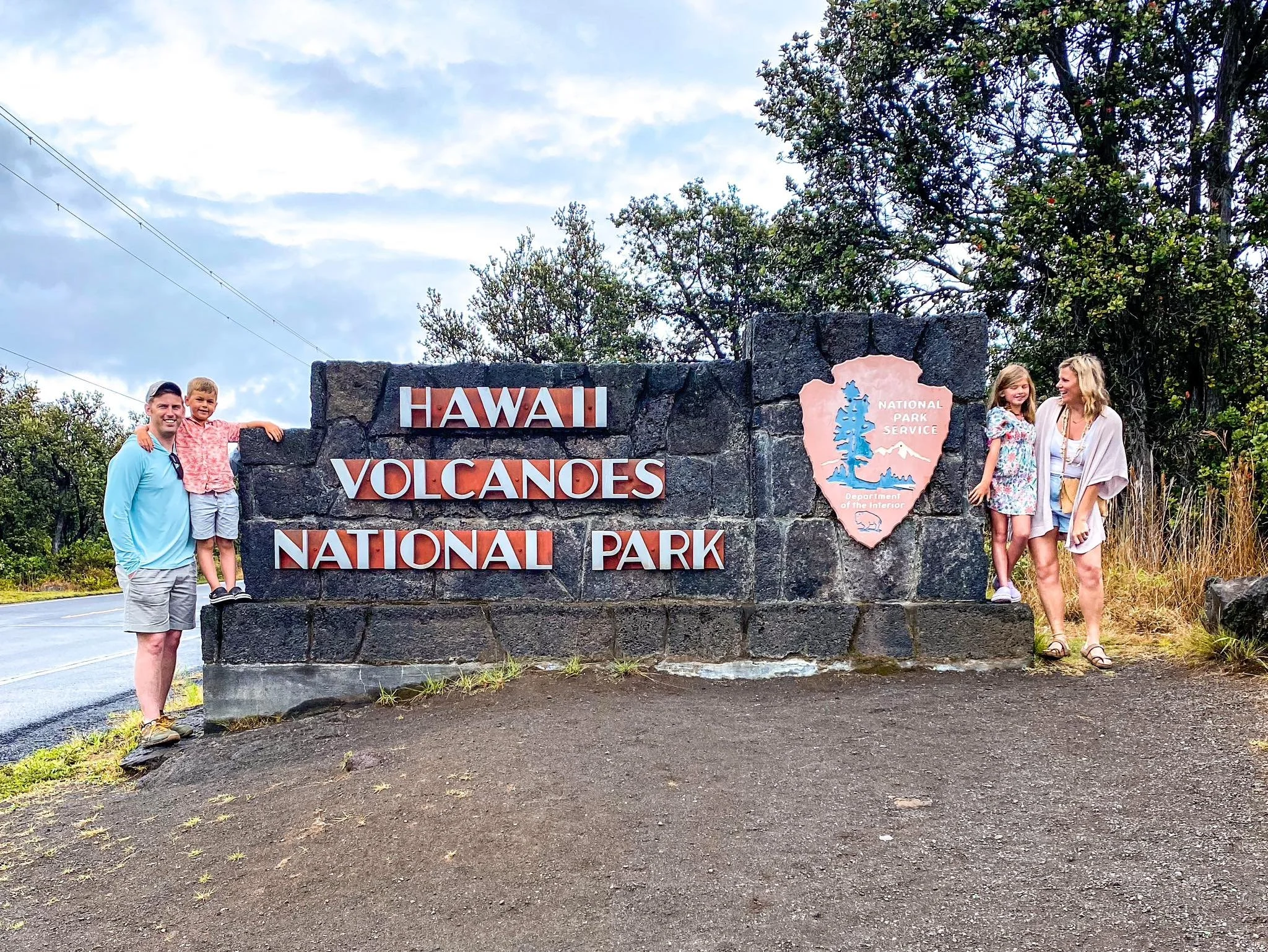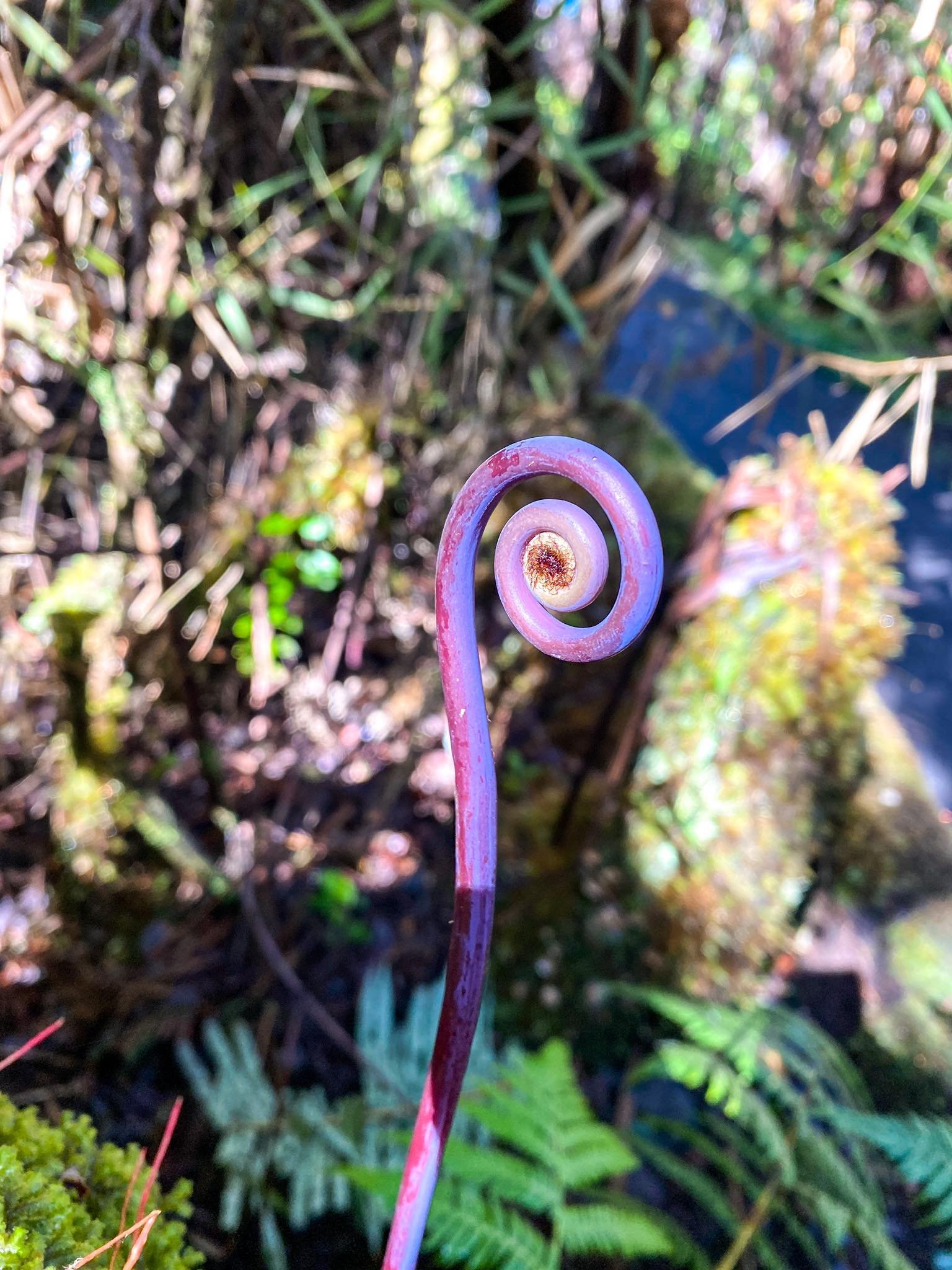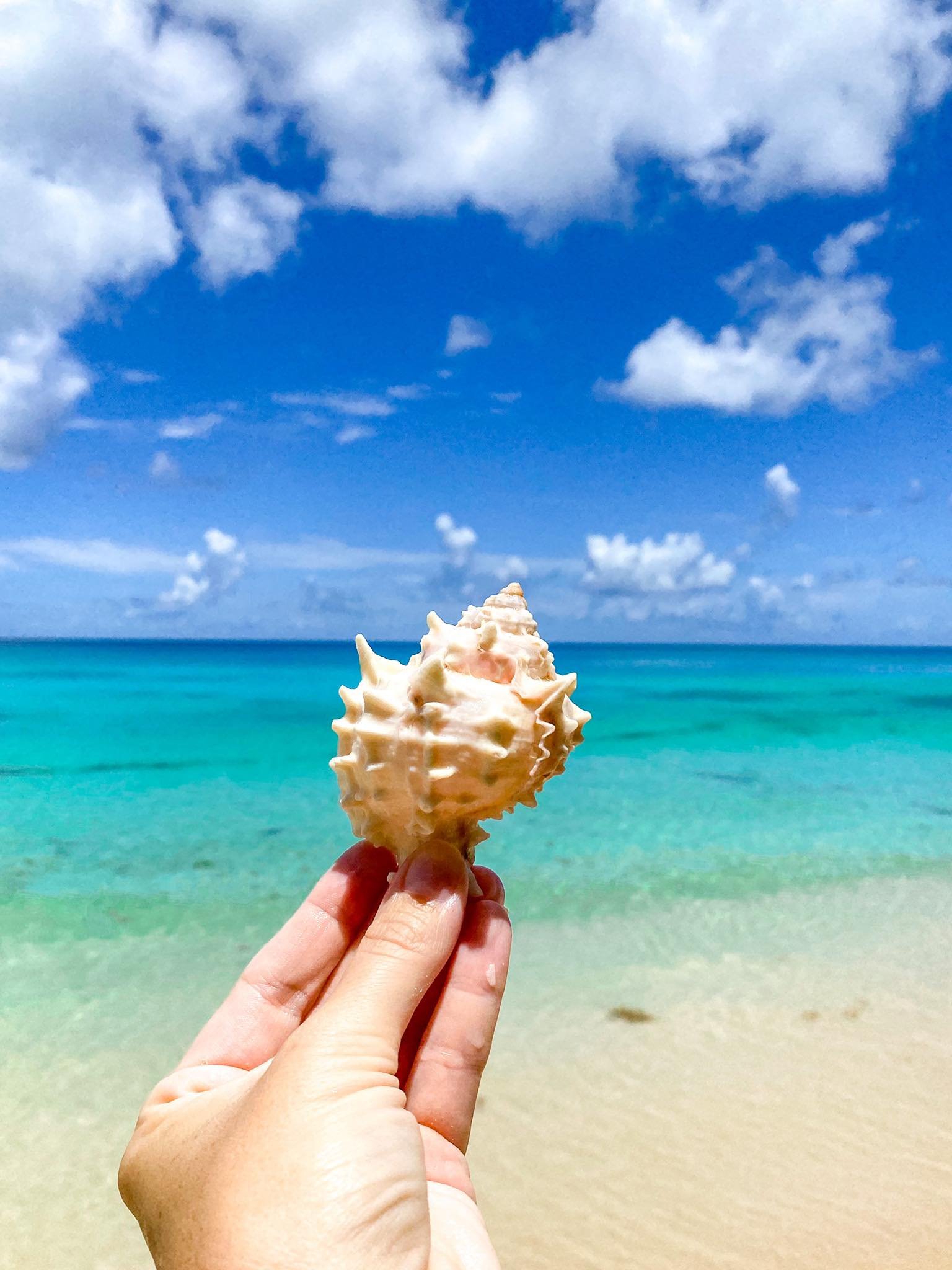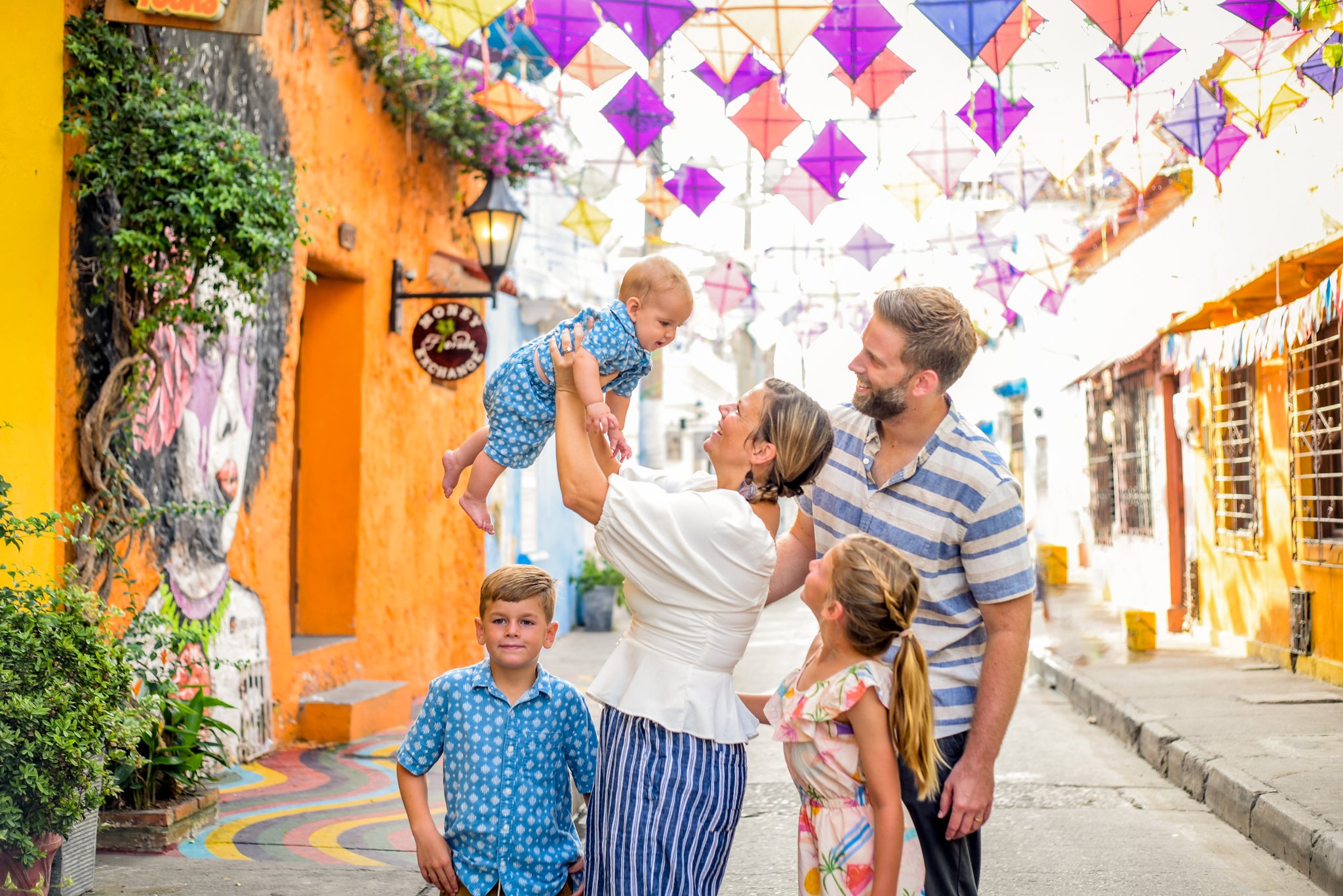What to do in Hawaii Volcanoes National Park with Kids
/Hawaii volcanoes National Park is packed wiith native traditions both past and present.
This site contains affiliate links to products. We may receive a commission for purchases made through these links.
Head to the park at night to experience a real life lava flow
If you’re looking for what to do in Hawaii Volcanoes National Park with kids, you’re in the right place. This guide will share all of the best things to do in Hawaii Volcanoes National Park! Hawaii Volcanoes is home to Kilauea and Mauna Loa Volcanoes which are both active and have erupted numerous times in recent history. This National Park is also home to several other volcanic features, including incredible lava tubes, massive craters, and cinder cones.
Hawaii Volcanoes National Park was established as a National Park by President Woodrow Wilson in 1916 and then designated as an International Biosphere Reserve and became a World Heritage Site in 1987. Whether you are traveling with kids or without, you’ll fall in love with this absolutely gorgeous National Park. Hawaii Volcanoes National Park is visited by approximately 1.26 million people annually and is about is 335,259 acres. It is the 24th largest National Park of the 63 in the United States.
Every visitor to Hawai’i Volcanoes National Park should make a stop at the Kīlauea Visitor Center to get a park map, get a weather update, and info about the park’s road conditions and possible closures. You can also visit HERE to see up-to-date closures and weather. Park Rangers are also a wonderful resource for finding out the parks more off the beaten path spots. The Kīlauea Visitor Center is located on Crater Rim Drive and is a short distance beyond the park entrance station on the right.
READ NEXT: 5 Ways to Beat Jet Lag in Kids
Table of Contents
Click to Skip to:
The steam vents in hawaii volcanoes look like something out of the movie jurassic park
When to Visit Hawai'i Volcanoes National Park
The main park entrance to Hawaiʻi Volcanoes National Park is open 24 hours a day, 7 days a week, as well as all holidays. On our visit we spent one day in Hawaii Volcanoes National Park, but it was a very long day that started before sunrise and ended after we saw the lava flow at night. I recommend at least 2 full days as apposed to one day at Hawaii Volcanoes so you an take you’re time and really experience the park.
As with all Hawaiian islands, June through September will be the most crowded months in park due to school breaks. The temperature through the summer is warm as expected, but also mostly clear skies. In these months, it is best to enter the park just before or at sunrise to beat the crowds and the heat.
In the winter months the temperatures drop, but not by a lot. The cooler weather will make mid-day adventures more bearable, but sunscreen is still a must!. February is the coolest month on average.
November through April is going to be the best time to visit Hawaii Volcanoes in my opinion. The cooler temps and lower crowds make the park more appealing. We visited in April and it was fantastic. The days were warm, but not hot. We did encounter a few rain showers during our time on the Big Island, but they moved through quickly. When we visited the lava flow, the night air was cool enough to warrant a light jacket.
How to get to Hawaii Volcanoes National Park
Hawaii Volcanoes National Park is located directly off of Mamalohoa Highway (Route 11) on the south side of the Big Island. You may see the highway called Hawaiʻi Belt Road. This section of Route 11 has a few other awesome stops like the Black Sand Beach or the entrance to Green Sand Beach and it connects the East and West sides of the islands. If you are headed to Hilo from Kona, you can make Hawaiʻi Volcanoes National Park a stop along the way.
Obligatory national park sign photo!
How far is The Hawaii Volcanoes National Park from Kona? 1 hour, 49 minutes (plan for 2 - 2.5 hours with traffic and stop for some musubi)
How far is The Hawaii Volcanoes National Park from Hilo? 40 minutes (plan for 1 hour with traffic)
There are two entrances to the park. The main park entrance is Hawaiʻi Volcanoes National Park is open 24 hours a day, 7 days a week, as well as all holidays.
NOTE: The Hawai'i Volcanoes National Park Kahuku Unit is located on Hwy 11, between mile markers 70 and 71. The unit is 70.5 miles south of Hilo. The Kahuku Unit is open Thursday through Sunday from 8 a.m. to 4 p.m. and is closed on Monday, Tuesday, and Wednesday. THIS IS NOT THE MAIN ENTRANCE TO THE PARK!
READ NEXT: 12 Tips for Flying with Toddlers
Back to Top
How Much Does it Cost to Get into Hawaii Volcanoes National Park?
Day and Weekly Passes
the line was short and quick to get into the park on the busy Labor Day Weekend (Sunday at 9:45 AM)
Vehicle Pass - $30.00
This pass includes everyone traveling in a single vehicle for Hawai’i Volcanoes National Park. Pay once and get access to the park for 7 days.
Individual Entry Pass - $25.00
This entry fee is for a single person traveling on foot or by bicycle into Hawai’i Volcanoes National Park. Pay once and get access to the park for 7 days.
Motorcycle Pass - $15.00
This pass includes everyone traveling on a motorcycle, scooter, or similar motorized vehicle into Hawai’i Volcanoes National Park. Pay once and get access to the park for 7 days.
Hawai’i Tri-Park Annual Pass - $55.00
This pass includes entrance fees for pass holder and occupants of a single, private vehicle at Hawai'i Volcanoes National Park, Haleakalā National Park, and Puʻuhonua o Hōnaunau National Historical Park. This is perfect for Hawaii residents.
Or you can buy an Annual Pass to all of the U.S. National Parks HERE for only $80.
Back to Top
Feeling too overwhelmed to plan? Take a Guided tour!
Where to Stay in Hawaii Volcanoes National Park
Lodges in Hawaii Volcanoes National Park:
We ate 3 meals at Volcanoe house. The views are incredible and the food is even better!!
Volcano House:
The Historic Volcano house sits on the rim of Kīlauea caldera with a view toward Halema'uma'u crater. Kīlauea is one of the world’s most active volcanoes thus drawing in visitors from all over the world. The Volcano House’s history dates back to 1846, but it has been recently restored. The hotel is now home to 33 historic guest rooms, a snack bar, lounge, amazing restaurant, and gift shop! Volcano House also hosts many cultural demonstrations and events to keep it's rich legacy and Hawaiian hospitality alive!
We ate at Volcano House 3 times and it is by far the best restaurant in Volcano National Park!
Volcano House is conveniently located directly across from the Kilauea Visitor Center and also has access to some of the park’s trailheads.
Make reservations online or you can call (844) 569-8849
Staying inside the park means you’re closer to really fun hikes!
Kilauea Military Camp:
Kilauea Military Camp on Hawaii Island is a Morale, Welfare and Recreation facility serving members of the U.S. Armed Forces and their families. KMC offers 90 one, two and three bedroom cottages and apartments. Each unit includes a mini-refrigerator, microwave, coffee maker. There are fireplaces and living rooms in every unit and in select units there are jetted bathtubs and full kitchens. Some of the units are made for large groups featuring six or seven bedrooms and full amenities. On-site there is a gas station, gift shop, restaurant, basketball court, playground, laundry, free parking, and even an activity center.
We stayed here for 2 nights and it was amazing. We had a 2-bedroom cottage with a fireplace, full kitchen, front of house parking, and a large bathroom. The kids spent time playing across the way on the playground. I highly recommend Kilauea Military Camp to anyone who is eligible to stay here. (My husband is active duty)
READ NEXT: 25 Must Haves for Traveling with a Baby or Toddler
You can see the volcano from the tables inside of volcano house restaurant. it’s amazing to eat breakfast and watch the eriuption.
Hawaii Volcanoes National Park Campgrounds:
There are 2 front country campgrounds located in Hawaii Volcanoes National Park. Campgrounds, and sections of campgrounds, are subject to close during eruptions or due to weather, so be sure to check the NPS page for closures and information on camping in Hawaii Volcanoes National Park.
Nāmakanipaio Campground:
Nāmakanipaio Campground Tent: This campground is nestled amidst a fragrant eucalyptus grove, 4,000 feet above sea level. There are This campground has restrooms, water, picnic tables and barbecue pits. Campfires are permitted in the barbeque pits only. Maximum stay is 7 days.
Fee: $15 per night
Nāmakanipaio Campground Glamping: Get the full “camping big island” experience for two (2) by renting a tent inside Hawaii Volcanoes National Park - Volcano House staff will set up and take down the equipment. Call Volcano House directly and reserve this special experience: (808) 756-9625.
Nāmakanipaio Campground Cabins: There are 10 rustic, one-room wooden cabins in the campground. The cabins sleep 4 (1 double bed and 2 bunk-style twin beds). Each cabin has a picnic table, an outdoor barbecue grill and an outdoor firepit. Reservations are required.
Kulanaokuaiki Campground:
Kulanaokuaiki Campground Tent: This campground offers 9 sites that are first come, first serve. This campground is located about 5 miles down the Hilina Pali Road at 2,700' elevation. Each campsite has a tent pad and picinic table, but fires are NOT permitted in this campground. There are vault toilets available, but no water is available.
Fee: $10 per night
Back to Top
the kids climing on the lava in hawaii volcanoes national park
Where to Stay Outside of Hawaii Volcanoes National Park
There are so many wonderful plants and animals to experience in hawaii volcanoes
Recommended Stays:
Lava Lodge at Kilauea: Lava Lodge is very close to the entrance of the National Park. While staying here, check out the Park, Volcano Golf and Country Club and Volcano Winery. Aloha Candy Company and Akatsuka Orchid Gardens. Take an opportunity to explore the area for outdoor excitement like hiking/biking trails and other activities like birdwatching. Lava Lodge has cabins that accommodate 2-7 guests, free on-site parking, free wi-fi, Flat-screen TVs with cable channels and DVD players, Lanais, coffee/tea makers, and daily housekeeping! This is one of the bests places for families to stay outside Hawaii Volcanoes!
There are so many great places to stay with kids near Hawaii Volcanoes National Park. Use the map below to find cabins, hotels, and lodges located outside the park. You can search by group size, budget, and location.
READ NEXT: 10 Tips for Flying with a Baby
Back to Top
What to do in Hawaii Volcanoes National Park with Kids
checking out the steam vents !
1) Hike:
There are so many places to go hiking in Hawaii Volcanoes National Park! Hiking is one of the best things to do in Hawaii Volcanoes National Park with kids because it gets everyone up close to the flora, fauna, ecology, and wildlife of the park. Seeing endless lava fields with the pristine blue ocean in the background is an experience everyone needs to have. The hikes listed under “best hikes for toddlers in Hawaii Volcanoes” and under “best hikes for kids in Hawaii Volcanoes national park” are going to be the best kid friendly hikes volcano national park! The longer, more difficult hikes are listed under “best hikes for teenagers in Hawaii Volcanoes National Park.”
Best Hikes for Toddlers in Hawaii Volcanoes National Park
Thurston Lava Tube is fun for the entire family
Thurston Lava Tube: (DO NOT MISS) This easy hike is worth the reward! The official Thurston Lava Tube trail starts in a rainforest before entering a 500-year old lava tube where a river oft lava once flowed. If you start at the Kīlauea Iki Overlook like we did, it’s a gorgeous 1.5 mile walk. There IS parking at the Lava tube which would make the hike about 0.5 miles total, but parking is extremely limited. The lava tube is lit 8 a.m. to 8 p.m. Flashlights are recommended outside of those hours. The restrooms near the lava tube are open from 9 a.m. to 5 p.m. Thurston Lava tube is one of the most popular things to do at Hawaii Volcanoes National Park, so keep that in mind when you’re deciding when to visit.
Crater Rim Trail: This easy trail can be very long or very short depending on how far you want to go. If you’re doing this trail with toddlers or little kids, I suggest accessing it at Volcano House and following only the Kūpinaʻi Pali (Waldron Ledge) section The Waldron Ledge section is an easy 1-mile round trip paved trail that takes you to the overlook and back. (This portion is stroller an wheelchair friendly) ***The full Crater Rim Trail takes hikers along the edge of the Kilauea summit caldera from Uēkahuna to just past Keanakākoʻi Crater. The trail is an awe inspiring journey around the summit of one of the most active volcanoes in the world where hikers can see the dramatic aftermath of the 2018 summit collapse, subsequent eruptions, steam vents, and lush rainforest.
the Puʻuloa Petroglyphs are a must see when visiting hawaii volcanoes national parl
Best Hikes for Kids in Hawaii Volcanoes National Park:
the boardwalk at Puʻuloa petroglyphs allows visitors to see the markings without damaging this sacred site.
Puʻuloa Petroglyphs: (DO NOT MISS) This is an easy 1.5-mile round trip trail that takes hikers out to the Petroglyphs at Puʻuloa. Hikers MUST stay on the boardwalk at the Petroglyph site because Puʻuloa is a very sacred and religious place for many of the people of Hawaiʻi. This area has been used for rituals for over 500 years and deserves the utmost respect. It is the largest petroglyph field in the state. The hike has no shade at all, so wear a sun hat and bring a lot of water. There are no restrooms at the trailhead.
Ha‘akulamanu (Sulphur Banks): This easy 1.2 mile hike starts at the Visitor Center. It takes hikers to the Ha'akulamanu (Sulphur Banks). Here you’ll see where volcanic gases seep out of the ground along with groundwater steam. If you smell rotten eggs, you’re in the right place! (If you are traveling with infants, have respiratory problems, or are pregnant — do not do this trail.)
Uēaloha (Byron Ledge): This easy hike 2.2-mile out and back trail provides excellent views of Puʻupuaʻi cinder cone and sporadic vistas of Kīlauea caldera. Start at the Devastation Trailhead! I loved the views from this hike as there are several jut-offs that allow you to see into the active volcanic crater!
Maunaiki and Footprints Area: The Maunaiki area is home to an easy walk that takes hikers deep into Hawaiian History. Here you can see footprints left by native Hawaiians after a dramatic explosion occurred at the summit of Kīlauea in 1790. This trail is in the open with little to no protection from the sun. Bring sun protection, rain gear, and plenty of water!
There are two trailheads to this area: the Kaʻū Desert Trailhead on Highway 11 (easy 1.8-mile trail) and the Maunaiki Trailhead on Hilina Pali Road (Moderate 7-mile trail).
This is the entrance to thurston lava tube!
The kids hiking along devastation trail
Best Hikes for Teenagers in Hawaii Volcanoes National Park
This is from my hike from devastaion trail to volcano house via byron ledge and halema’uma trail.
Devastation Trail to Uēaloha (Byron Ledge) to Kīlauea Iki to Halema'uma'u Trail: This moderate/hard trail is the path I took and it’s a really great hike that takes you from the cinder cone to the rainforest to the volcanic floor and then up through the rainforest to the Volcano House. One way is about 2.5 miles-3-miles. My family hiked Devastation Trail, but I kept going and they met me at the restaurant. It is a really scenic hike! Be prepared to climb down from the rim into the crater and then back up again! This is definitely an interesting volcano hike in Hawaii!
For additional information about back country hiking in Hawaii Volcanoes National Park, go HERE.
Back to Top
along Halema'uma'u Trail it gets very rainforesty and has some incredible flora and fauna.
2) Watch the Lava Flow!
Witnessing the lava flow from Kilauea must be on every Hawaii volcanoes national park itinerary! There are three places to see the lava flow at night, but the times and information are constantly changing, so check HERE before making plans.
Where to View The Lava Flow: I recommend viewing the lava at night from the Overlook near Keanakākoʻi Crater.
Best Time to View Lava Flow: We decided to go about an hour after sunset hoping the initial crowd would dissipate, but there were still some crowds. We were on the trail hiking around 7:30 PM. The best time to view lava in Hawaii Volcanoes is after 9PM - the crowds will have thinned dramatically by then.
an iphone photo of the lava flow in hawaii volcanoes from the Overlook near Keanakākoʻi Crater
Getting There: To get there, we drove along Crater Rim Drive to where the road meets the Chain of Craters drive. Here there is a very small parking area (the trailhead for Devastation Trail). There will be park rangers guiding cars where to park or having them wait along the road for other visitors to leave. We ended up getting the overflow parking up at Puʻupuaʻi trailhead, so my husband was able to drop us off at the Devastaion Trailhead, go park and then he hiked down to us. If you have to park in overflow - plan to hike at least an extra 1.5 miles total.
an iphone photo of the lava flow in hawaii volcanoes from the Overlook near Keanakākoʻi Crater
If you get to park at Devastation Trailhead, the hike to the lava viewing area is 0.5 miles one way and is on a nicely asphaly paved path. Once you reach the end of the road, a park ranger will show you where to go. You will leave the paved path onto a gravel path and walk a short distance to the viewing area.
What to bring to view the lava:
Rain Jacket
Head Lamp with red light or Flashlight with red light option (We used a headlamp and it was perfect)
Phone or Camera to take photos (DO NOT USE YOUR FLASH, it doesn’t help and bothers other people viewing)
Back to Top
3) Drive the Chain of Craters Road
Hōlei Sea Arch - located at the end of the chain of craters road
Chain of Craters Road is currently 18.8 miles long. Over the years, this road has been covered by lava flow and re-paved and extended. I recommend everyone headed to Hawaii Volcanoes make the entire drive as it is the gateway to some of the best activities in Hawaii Volcanoes National Park.
Along this drive, there are many scenic and historic stops. It’s along the Chain of Craters Road that you’ll find the Puʻuloa Petroglyphs, Hōlei Sea Arch, the Kealakomo Overlook, as well as overlooks to see the Puhimau Crater, Pauahi Crater, Puʻuhuluhulu Cinder Cone, and the lava flows of Mau Loa o Maunaulu. THIS MAP has all of these stops outlined for you as you plan your drive.
There are picnic areas at Kealakomo Overlook and at the end of the road near the Hōlei Sea Arch. So, if you’re out hiking and exploring for the day, pack a cooler and have a picnic in one of the most scenic places in Hawaii! Driving through the park finding your favorite spots and stopping to explore is arguably the best way to see Volcano National Park!
NOTE: No food, water, or fuel is available along Chain of Craters Road. There are vault toilets at the Maunaulu parking area and at the end of the road near the Hōlei Sea Arch.
Back to Top
the ocean views along chain of craters road are unreal. the black lava with the blue ocean in the back ground is gorgeous.
4) Become a Hawaii Volcanoes National Park Junior Ranger
Both kids RECEIVED Hawi’i Volcanoes junior ranger badges
Hawai’i Volcanoes offers in-person or online Junior Ranger Programs.
Junior Ranger Program: Children can earn an official Hawai’i Volcanoes Junior Ranger Badge by completing the Guide to Discovery and Exploration of Hawai‘i Volcanoes National Park. Ask for a free booklet at any visitor center, complete it, then return it to receive your badge.
Currently, you can also explore areas of the park virtually HERE.
becoming a junior ranger means learning about preserving and protecting the national park!
5) Attend a Special Program put on by the National Park
There is a calendar of special events put on by the park.
ʻIke Hana Noʻeau: Join Hawaiian practitioners as they share the arts and culture of Hawai’i with hands on activities.
After Dark in the Park: Attend one of the presentations put on by leading scientists, artists, and cultural experts on park-related topics.
Nā Leo Manu: Enjoy authentic Hawaiian music in the Kīlauea Visitor Center
Stewardship at the Summit: Help Park Rangers remove invasive plant species from the parklands.
Back to Top
check the calendar to see what programs are being run by the national park service
6) Visit the Kahuku Unit
While this is in the main area of the park, Kahuku has many lava fields to traverse!
Click HERE for a map of the Kahuku Unit.
The auxiliary unit to Hawaii Volcanoes National Park is the Kahuku Unit of the park. This part of the park is low trafficked and often overlooked by visitors. Kahuku is a vast 116,000 acre area consisting of rolling, pastoral landscape on the slopes of the largest volcano on Earth. Kahuku Ranch was once one of the biggest cattle ranches in Hawaiʻi, producing beef and hides for more than 150 years. Click HERE for a full history.
This area is only open Thursdays through Sundays from 8 a.m. to 4 p.m. It is located in the district of Kaʻū, near mile-marker 70.5 on Highway 11. When planning a visit to the Kahuku Unit, keep in mind it is a one-hour drive from Kīlauea Visitor Center. (toward Kona, away from Hilo) Also, it is important to note that there is no potable water is not available in this part of the park, so pack in everything you will need for the day.
There are many hiking opportunities in this unit of the park and you can see them all HERE.
Back to Top
don’t forget to look up when you’re inside the thurston lava tube!
Big Island Guide for Families
Click to check out the full guide I used to plan to our 10 days on the Big Island. This guide helped me determine which activities were family friendly, distances between activities, which foods I needed to try, and helped me decide how to spend each day we were on the Island.
This full Big Island travel guide and itinerary is and absolute must for any trip to Hawaii.
Visiting Hawaii Volcanoes National Park should be on everyone’s bucket list. There are so many things to do in Hawaii Volcanoes National Park with kids (or without!). The park is home to rich historical sites, amazing geological formations, real flowing lava fields, unmatched ocean views, underground lava tubes, and hikes for all abilities. No matter if you camp in the park or stay nearby, Hawaii Volcanoes National Park is an unforgettable adventure. I can’t wait for you to see all there is to do in Hawaii Volcanoes National Park with kids!
PIN ME:
AMAZON AFFILIATE DISCLOSURE:
There are links on this site that can be defined as “affiliate links”. This means that I may receive a small commission (at no cost to you) if you subscribe or purchase something through the links provided.
Big Brave Nomad is a participant in the Amazon Services LLC Associates Program, an affiliate advertising program designed to provide a means for website owners to earn advertising fees by advertising and linking to amazon.com, audible.com, and any other website that may be affiliated with Amazon Service LLC Associates Program.
















































